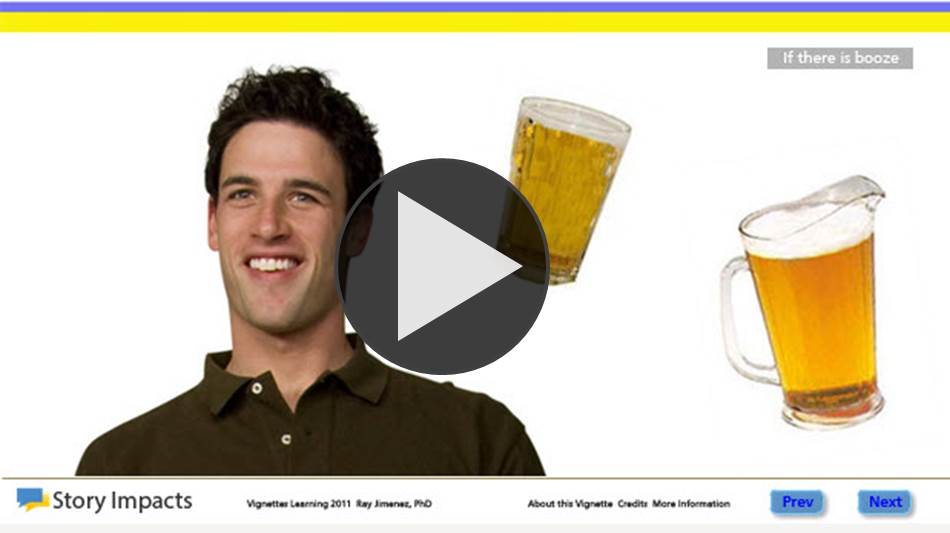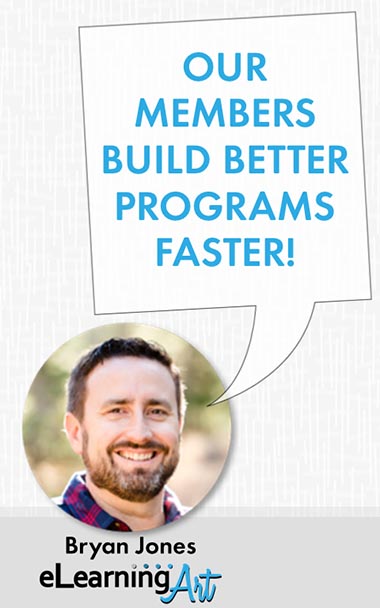In a previous post, I talked about using conversations in eLearning and showed some techniques for rapid conversation building. In this post, I’ll take it one step further and show you how a fleshed out conversation can become a mini-scenario. These mini-scenarios put an issue into context and encourage your learners to think about how they would respond in a similar situation.
The power of mini-scenarios
Scenarios are one of my favorite types of eLearning and I’m going to show you some examples from one of the best in the business, and my good friend, Ray Jimenez. Ray is a master of storytelling and scenarios in eLearning. Ray uses a style of mini-scenario he calls a “vignette” to create a realistic scene. What’s great about mini-scenarios is that you can write and build them much faster than a full scenario, but they are still really effective.
Let’s take a quick look at how Ray addresses the topic of balancing individual rights and respecting religious beliefs at an after-hours semi-work function in a 2-minute vignette If There is Booze
Here are a few of the elements that I really like about this course:
- Short & topical: Ray picks a single topic and addresses the issue in minutes, not hours.
- Easy to develop, but effective: This course isn’t a complex branching scenario. It’s a linear course with interaction at the end.
- Delivered through conversations: You’ll notice that there isn’t a single bullet point in the course. The only text in the course is used to set the scene. The rest of the content is delivered through a realistic dialog.
- It feels “real”: The dialog and conflict feel real. I can imagine an issue like this actually happening.
- Encourage thinking: Ray doesn’t tell the learner “The right choice was for Bill to do X.” Instead, he poses a few questions at the end.
- Audio: The voice of the two characters really adds to the “real-life” element of scenario. To speed up development, you could use speech bubbles and text. But, if you have the voiceover skills (or budget), the audio is a nice touch. Plus, that music was rocking, right? 🙂
Build your own mini-scenario: shift from content to context
I asked Ray for some practical tips for how to build your own micro-scenario and he suggested to “always start with the situations that learners confront daily…situations and events that are REAL to the learners.” Instead of focusing first on content, Ray likes how a micro-scenario starts with context to help a learner relate to content. Both of the examples below
- Content: List out definitions of misrepresentation VS Context: Scenario about getting fired from a job due to misrepresentation
- Content: Display process on how to purchase good parts VS Context: Scenario about high waste and rejects because parts were purchased incorrectly
There is a tendency when building content to jam a lot of content into a course without context. But as Ray says, “I am not suggesting that we don’t teach the content. But we want is always to start with a situation that helps learners relate to the content.”
You can check out a few more of examples on our eLearning scenarios examples page.
Where to learn more about storytelling and scenarios
If you’re interested in learning more about using stories in eLearning, I highly recommend you check out one of Ray’s storytelling courses. I think you’ll find that Ray’s techniques provide a practical and engaging approach to building training. Thanks again Ray for sharing these samples!
What do you think about leaving a course open ended like this? Do you think your learners could benefit from a vignette? Share your thoughts with us in the comments.




